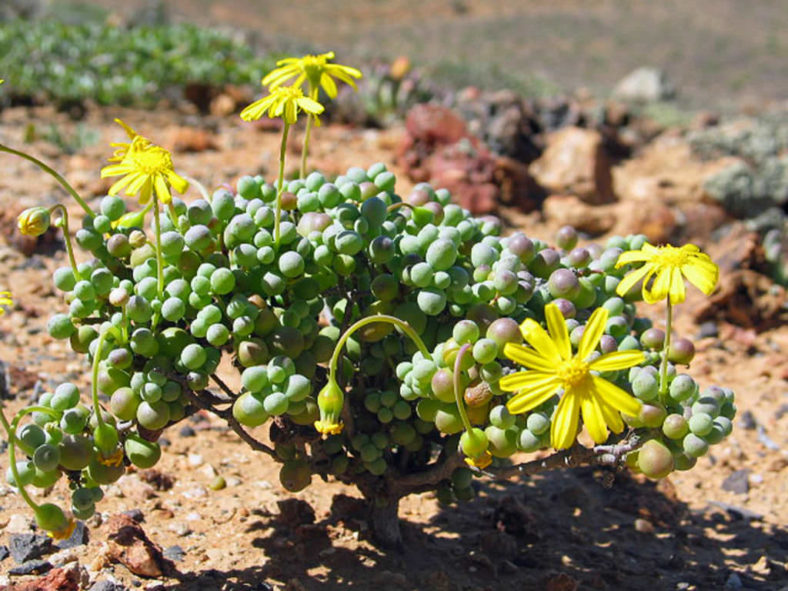Othonna is a genus of more than 100 African plants in the family Asteraceae. These are evergreen or deciduous geophytes, dwarf succulents, or shrubs concentrated in the Western Cape province of South Africa and southern Namibia. A few species occur in summer rainfall parts of southern Africa. The genus is closely allied to Senecio and can be distinguished principally by details of the involucre.
The form or habit of Othonnas is very diverse. Leaf diversity is also notable in this genus. A few species possess highly succulent leaves (Othonna capensis and Othonna sedifolia), but most have bifacial leaves that are only slightly succulent. Size and shape vary, with most species having leaves that range from 0.4 to 4 inches (1 to 10 cm) in length.
The bright yellow (occasionally white or purple) flowers are the most distinguishing characteristic of the genus, and the flowering times differ from different species. Some bloom just before the beginning of their summer rest, and others bloom after fall growth begins.

Growing Conditions and General Care
Othonnas have a variable range of habitats; some grow in very hot, arid regions, but they avoid the intense, desiccating rays of the north and west sun, instead growing between rocks on southern slopes. On the contrary, a few species grow in direct sunlight in arid situations that become very hot and dry and saturated for a few weeks during their growing period. All Othonnas thrive in very open situations with ample free air circulation.
The fleshy leaves and daisy-like flowers make Othonnas excellent choices for a desert or rock garden (where hardy) or for indoor use as houseplants or greenhouse specimens.
Othonnas tend to be pretty hardy, but as Othonna cacalioides, some can be extremely difficult to grow in cultivation. Keep them in flat pots if you do not provide them with the right conditions and space to develop a well-established root system. In summer, protect plants from direct sunlight. They prefer to be moist, fresh, and receive plenty of light during the growing season. They do not like temperatures below 50°F (10°C).
In the warmer months, Othonnas go into their dormancy period. Stop watering and place them in a shaded, cooler area, away from direct sunlight, in a relatively dry location, and with good air circulation. When nights cool down in the fall, the plants may start growing on their own, but a good soaking will help them to leaf out.
A typical succulent soil mix should be suitable for growing Othonnas, but adding additional drainage material is recommended.
Propagation
Start seeds in spring at 64°F to 70°F (18°C to 21°C). Plants can also be propagated from basal or semi-ripe cuttings in late summer using bottom heat.
Links
- Back to genus Othonna
- Succupedia: Browse succulents by Scientific Name, Common Name, Genus, Family, USDA Hardiness Zone, Origin, or cacti by Genus